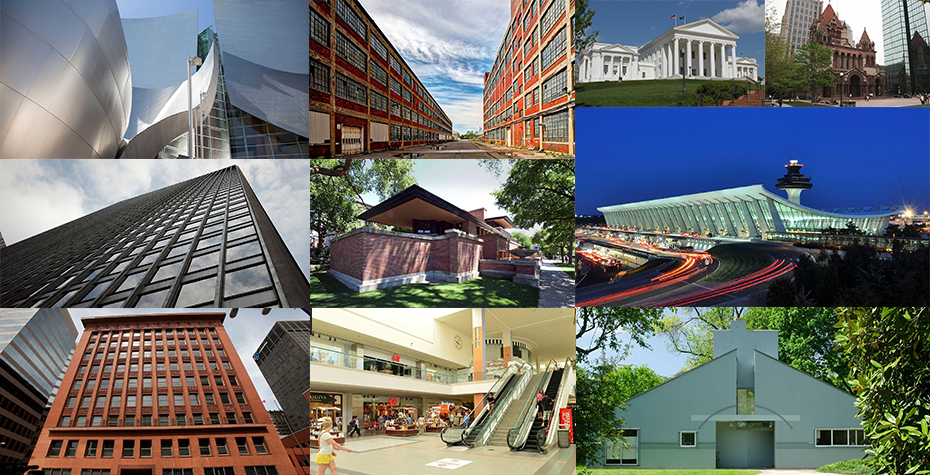Professor and Professor Emeritus Lend Expertise to "10 Buildings That Changed America"
Alice Friedman, Grace Slack McNeil Professor of American Art and Professor of Art, and
James O'Gorman, Grace Slack McNeil Professor of the History of American Art Emeritus, shared their expertise for a new PBS special, "10 Buildings That Changed America." The program, which features 10 influential American buildings that have "changed the way we live, work, and play," premieres on Sunday, May 12, 2013 at 10:00 p.m. (
check local listings).
Alice Friedman's research and teaching focus on modern architecture and the history of design in the United States. She was interviewed for the program, she said, because of her expertise in mid-century modern architecture and her focus on the work of Eero Saarinen (Dulles Airport) and Mies van der Rohe (Seagram Building).
"The best part of shows like this one is that they encourage everyone to make up their own competing lists, and to debate the strengths and weaknesses of other people's top 10," Friedman said. This year, her architecture students have discussed the PBS list (
which has been available on the PBS website) with, what Friedman called, "great passion and an admirable wealth of historical knowledge at their fingertips."
Friedman's comments on the show amplify points about the diversity of modernist approaches and the beauty and influence of Saarinen's Dulles Airport and van der Rohe's Seagram Building. James O'Gorman, who is known for his research and writing on the 19th-century American architects Henry Hobson Richardson, Frank Furness, and Hammatt Billings, discusses H.H. Richardson's Trinity Church.
According to a PBS press release, "10 Buildings That Changed America" features rare archival images, distinctive animation, and interviews with some of the nation's most insightful historians and architects, including Frank Gehry and Robert Venturi. The program takes viewers inside these groundbreaking works of art and engineering to reveal the shocking, funny, and even sad stories of how these buildings came to be.
The 10 buildings featured on the program, and pictured here, are:
Virginia State Capitol, Richmond, Va. (1788)
Designed by Thomas Jefferson, the Virginia State Capitol marked the beginning of the American tradition of modeling government buildings on Roman and Greek temples.
Trinity Church, Boston, Mass. (1877)
H.H. Richardson's Trinity Church was the first example of the architect's Richardsonian Romanesque style, which was later used in churches and civic buildings across America.
Wainwright Building, St. Louis, Mo. (1891)
Louis Sullivan's Wainwright Building was not the first skyscraper, but it gave the modern, steel-frame skyscraper its form.
Robie House, Chicago, Ill. (1910)
The Robie House is considered a masterpiece of Frank Lloyd Wright's prairie style, which transformed the American home.
Highland Park Ford Plant, Highland Park, Mich. (1910)
The Highland Park Ford Plant was the birthplace of the moving assembly line.
Southdale Center, Edina, Minn. (1956)
Southdale Center was America's first fully-enclosed indoor shopping mall.
Seagram Building, New York, N.Y. (1958)
Mies van der Rohe's Seagram Building was the model for modernist skyscrapers built across the country in the mid-20th century: a black, glass box, set back on an open plaza.
Dulles International Airport, Chantilly, Va. (1962)
Eero Saarinen's Dulles International Airport was the first airport in the world designed exclusively for jets.
Vanna Venturi House, Philadelphia, Pa. (1964)
The Vanna Venturi House is considered by many to be the first postmodern building.
Walt Disney Concert Hall, Los Angeles, Calif. (2003)
Frank Gehry's striking and avant garde Walt Disney Concert Hall, home to the Los Angeles Philharmonic, is one of the most acoustically sophisticated music venues in the world.

